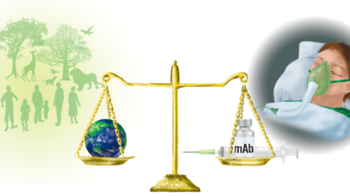PRESS RELEASE
- Research
- 2021
Cost–Benefit Analysis of Monoclonal Antibody Cultivation Scenarios in Terms of Life Cycle Environmental Impact and Operating Cost
Authors
Eri Amasawa, Hiroaki Kuroda, Kozue Okamura, Sara Badr and Hirokazu Sugiyama
Abstract
Pharmaceuticals represent a significant contributor to the environmental impact of healthcare. Biopharmaceuticals are a rapidly growing category in that industry. They provide considerable health benefits, but the environmental impact to produce them is still largely unclear. In this paper, we examined the cost–benefit of monoclonal antibody (mAb) production in terms of operating cost and environmental impact through an extended life cycle assessment including 15 environmental categories, disability-adjusted life years, and Eco-index. Based on a detailed kinetic model, we assessed the impacts of four production scenarios at a commercial scale of batch and continuous production using single-use and multi-use equipment. We further performed a sensitivity analysis on the cost–benefit analysis results to determine elements with the highest impact on process improvement. The results showed that there is a trade-off between the operating cost and human health among the four process scenarios. Continuous modes (i.e., perfusion cultivation) have the least human health damage but with the highest operating costs, while the combination of fed-batch and multi-use equipment yields the lowest operating cost with the highest human health damage. To improve the cost–benefit of mAb cultivation, the sensitivity analysis showed the high effectiveness of potential improvements to cell’s growth characteristics such as the specific production rate.
ACS Sustainable Chemistry & Engineering : https://pubs.acs.org/doi/full/10.1021/acssuschemeng.1c01435#

